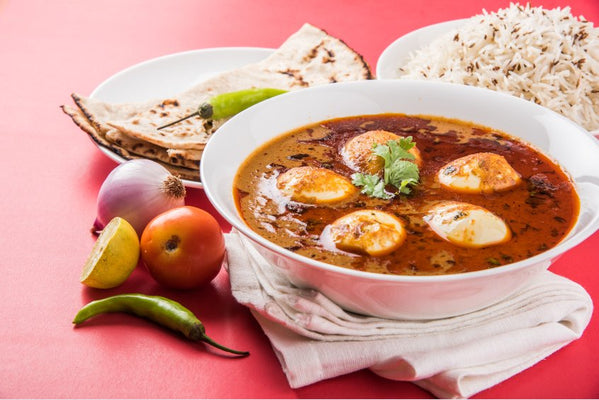
Pizza is one of the most popular foods worldwide, and for a good reason. The combination of crispy crust, tangy sauce, and gooey cheese is hard to resist. Making the perfect pizza at home can be a challenge if you are a pizza lover. But, with the right tools, you can achieve that perfect crust, and one of the most important tools is a pizza stone. In this article, we will explore the benefits of using a pizza stone and give you some tips on choosing, using, and caring for your pizza stone.
Table of contents
What is a Pizza Stone?
A pizza stone is a flat, round piece of natural or engineered material that is used to make pizza. It is typically made from ceramic, clay, stone, or cordierite materials. The pizza stone is heated in the oven and used as a surface to cook pizza on. The stone absorbs moisture from the pizza dough, resulting in a crispy crust. It also helps to distribute heat evenly, resulting in a perfectly cooked pizza.
Types of Pizza Stones
Several types of pizza stones are available, each with its benefits and drawbacks. Here are some of the most common types:
Ceramic Pizza Stones
Ceramic pizza stones are made from clay and are a popular choice because they are affordable and easy to use. They are also versatile and can be used for baking bread and other foods. However, they can crack if not handled carefully and may require a longer preheating time than different types of pizza stones.
Cordierite Pizza Stones
Cordierite pizza stones are made from a mineral that can withstand high temperatures. They are more expensive than ceramic pizza stones but are more durable and can be used for both home and commercial use. They also heat up quickly and evenly, resulting in a crispy crust.
Cast Iron Pizza Stones
Cast iron pizza stones are durable and retain heat well. They can be used on the stovetop or in the oven, making them versatile. However, they can be heavy and difficult to handle and may require seasoning before use.
Why Use a Pizza Stone?
Using a pizza stone has several benefits, including:Using a pizza stone has several benefits, including:
- Even Heat Distribution: A pizza stone absorbs and distributes heat evenly, resulting in a crispy crust and evenly cooked toppings.
- Moisture Absorption: The pizza stone absorbs moisture from the pizza dough, resulting in a crispy crust.
- No Sticking: A pizza stone provides a non-stick surface, making it easy to remove the pizza from the stone.
- Versatility: A pizza stone can be used for baking bread, pastries, and other foods in addition to pizza.
How to Use a Pizza Stone
- Preheat the Pizza Stone:
- Preheating the pizza stone is essential for a crispy crust.
- Place the pizza stone in a cold oven and preheat the oven to the desired temperature.
- Preheating the oven for at least 30 minutes ensures the stone is thoroughly heated.
- Prepare the Pizza:
- Place the pizza dough and toppings on a pizza peel dusted with cornmeal or flour.
- Slide the pizza from the peel onto the preheated pizza stone in the oven.
- Close the oven door and cook the pizza according to the recipe's instructions.
- Remove the Pizza:
- Once the pizza is cooked, remove it from the stone with a pizza peel.
- Be careful not to scratch the surface of the pizza stone, as this can cause it to crack.
Cleaning the Pizza Stone
To clean a pizza stone:
- Allow it to cool completely before wiping it with a damp cloth.
- Do not use soap or other cleaning agents, which can damage the stone.
- If the pizza stone has stains or burnt-on residue, use a scraper or spatula to remove it.
Tips for Choosing a Pizza Stone
When choosing a pizza stone, consider the following factors:
Size
Choose a pizza stone that is large enough to fit the size of the pizza you want to make. A larger stone will also be more versatile, as it can be used for baking other foods.
Thickness
A thicker pizza stone will retain heat better, producing a crispier crust.
Material
Choose a pizza stone made from a material that can withstand high temperatures, such as ceramic, cordierite, or stone.
Price
Pizza stones are available at various price points, from affordable ceramic stones to high-end cordierite stones. Choose a pizza stone that fits your budget and needs.
FAQs
Q: Can I use a pizza stone on a gas grill?
A: A pizza stone can be used on a gas grill. Preheat the stone on the grill, then slide the pizza onto the stone using a pizza peel. Close the grill lid and cook the pizza according to the recipe's instructions.
Q: How do I prevent my pizza from sticking to the stone?
A: To prevent your pizza from sticking to the stone, dust the pizza peel with cornmeal or flour before placing the dough on it. This will create a barrier between the dough and the stone.
Q: Can I use a pizza stone in a wood-fired oven?
A: A pizza stone can be used in a wood-fired oven. Using a pizza stone in a wood-fired oven can result in an even crispier crust.
Q: How do I store my pizza stone?
A: Store your pizza stone in a dry place at room temperature. Do not store it in a damp or humid location, which can cause the stone to crack.
Conclusion
A pizza stone is a must-have tool for anyone who loves to make pizza at home. It helps to create a crispy crust and evenly cooked toppings. When choosing a pizza stone, consider the size, thickness, material, and price. You can make the perfect pizza every time with some practice and the right tools.



